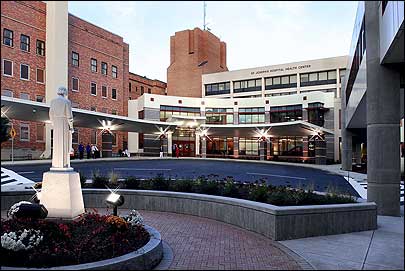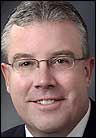To track temperatures in refrigerators that store blood, tissues, organs and vaccines, staff members at St. Joseph’s Hospital Healthcare Center, located in Syracuse, N.Y., had been taking time out of their schedules to read temperature sensors in each refrigerator several times per day, and to manually record the results on a piece of paper. Although these efforts took only a few minutes, they were carried out multiple times every day with more than 300 refrigerators, by highly paid employees whose primary job is to provide health services to patients.
In December 2008, St. Joseph’s began switching to an RFID-based system, provided by NEC Unified Solutions and using AeroScout‘s Temperature Monitoring System in conjunction with the hospital’s existing Cisco Unified wireless infrastructure. As the sensors collect data from the refrigerators, they transmit that information to software that can then alert the hospital’s staff if the temperature deviates from acceptable levels.
St. Joseph’s comprises one main hospital campus and 22 remote locations, each of which has refrigerators that must be managed. Since 2007, the Joint Commission, an independent, nonprofit organization that certifies and accredits hospitals, has required all health-care facilities to provide temperature records for refrigerators that store such temperature-sensitive products as blood, vaccines or pharmaceuticals. According to Chuck Fennell, chief information officer of St. Joseph’s, the hospital undertakes the record-keeping not only to satisfy those rules, but also as a safety precaution to ensure blood, tissues, organs and vaccines do not become too warm due to a door being left open, the electric power failing or a compressor breaking.
Having health-care employees monitor those temperatures, Fennell says, is “not a good use of their time.” While the hospital was already utilizing wired sensors in several refrigerators, it was unrealistic to expand a wired system throughout all 23 of its locations. Fennell says he met with NEC, which partners with AeroScout, and developed the new solution for St. Joseph’s using sensor nodes consisting of a battery-powered 2.4 GHz RFID tag that complies with the IEEE Wi-Fi standards and contains a built-in temperature sensor; AeroScout’s MobileView RFID software, which can transmit temperature alerts and translate sensor node data into temperature records; and the hospital’s own existing Wi-Fi system, which St. Joseph’s already used to wirelessly network its computers of wheels, laptops and Pocket PCs.
In early December, the hospital installed a dozen sensors in refrigerators on its main campus. That deployment took about a week, says Joel Cook, AeroScout’s director of health-care solution marketing. The facility uses plastic tie wraps to attach the nodes to the underside of shelves within the refrigerators. This month, the hospital began installing sensors to shelves in another 138 refrigerators at some remote locations; the refrigerators are Wi-Fi-enabled and store sensitive substances. The second phase of the deployment, Fennell says, will be the installation of sensors on most of the remaining 300 refrigerators, the majority of which contain food for hospital employees.
Each 2.4 GHz sensor node transmits a unique ID number and temperature data to the closest Wi-Fi access point. The information is then routed to the hospital’s back-end system, where MobileView software links the ID number and temperature reading with the specific refrigerator, and stores a temperature record that can be accessed by the hospital staff, as well as by Joint Commission inspectors, if they pay a visit to the facility. What’s more, the software sends an alert if the temperature deviates beyond the acceptable threshold, though it can be customized to do so only after a specified number of warm readings. In this way, if the sensors detect a warm temperature when a refrigerator door is briefly opened, it does not send a false alert.
“The pilot went according to plan,” Fennell says, “and we didn’t have any false alarms.” In fact, the system did not set off any alarms at all, which meant the refrigerators were working properly. The staff is pleased with the new system, he adds, noting, “The minute we go to a hospital unit and tell its staff they don’t have to [record temperatures manually] anymore, they’re very happy.”
The next step is for the hospital to attach AeroScout RFID tags to other assets, then leverage the MobileView software to help its staff locate missing items and reduce theft. “To substantiate the investment we’ve already made in the MobileView software [by using it to track assets] is a no-brainer,” Fennell states. He adds, “The minute we lit up with the software, we had 1,000 devices discovered,” because the AeroScout system recognizes not only AeroScout tags but any Wi-Fi-enabled device.
“We didn’t go into this expecting a documentable return on investment,” Fennell says. Still, he adds, saving 10 minutes of time for dozens of employees, multiple times each day, is an advantage to the hospital as well as to its patients.
Other hospitals are also employing the AeroScout system to track temperatures and assets within their facilities (see Belgian Hospitals Use RFID to Track Temperatures, Assets, Patients).



